Open Source AIOps on AWS: Top 5 Frameworks You’re Ignoring
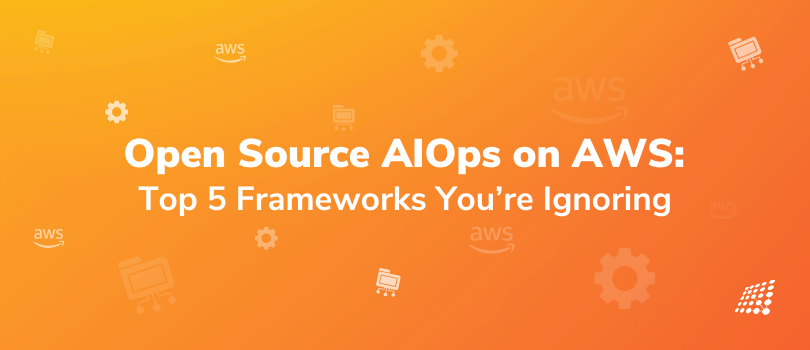
We’ve all heard of popular AI frameworks like TensorFlow and PyTorch, but when it comes to self-hosting Artificial Intelligence for IT Operations (AIOps) on Amazon Web Services (AWS), some real gems often go unnoticed. AIOps is transforming the way software developers manage IT systems by automating monitoring, predicting incidents, and significantly reducing downtime. 55% of organizations are already using AIOps, and another 19% plan to adopt it within the next year, highlighting its rising importance in IT operations. By self-hosting these solutions on AWS, you gain control, flexibility, and cost savings while leveraging powerful open-source tools that industry leaders trust.
In this blog, we’ll explore five open-source AIOps frameworks that you might be overlooking. We’ll shine a spotlight on Apache Airflow and Metaflow for orchestrating pipelines, and showcase Feast as a hidden treasure for real-time incident prediction. Join us as we dive into how to self-host AI on AWS and elevate your IT operations to the next level.
What is AIOps?
So, when we talk about artificial intelligence for IT operations, or AIOps, we’re really diving into how AI—think natural language processing and machine learning—can help make IT service management and operational workflows smoother and more efficient.
AIOps makes use of big data, analytics, and machine learning capabilities to:
- Gather and combine the vast (and constantly growing) amounts of data created by IT systems, application demands, performance monitoring tools, and service ticketing systems within a company’s tech environment.
- Cut through the clutter to pinpoint key events and patterns that reveal issues with application performance and availability.
- Figure out what’s causing problems and relay that information to IT and DevOps for quick action, or sometimes, resolve these problems all by itself without needing a human touch.
By combining separate manual IT operations tools into a single smart, automated IT operations (ITOps) platform, AIOps allows IT teams to address slowdowns and outages swiftly—and often proactively—while giving them a clear view and context.
This approach helps businesses bridge the gap between the varied, ever-changing, and hard-to-track IT landscapes and disconnected IT teams on one side, and user expectations for app performance and uptime on the other. With digital transformation initiatives popping up across industries, many in the know believe AIOps is where the future of IT operations management is headed.
AIOps components
AIOps can tap into a variety of AI strategies and features, covering everything from data collection and aggregation to algorithms, orchestration, and visualization. Here are the key components:
- Algorithms:
- Capture IT knowledge, business logic, and goals.
- Help AIOps platforms focus on relevant security events and performance decisions.
- Serve as the foundation of machine learning, allowing platforms to set baselines and adjust as they gather new data.
- Machine Learning:
- Uses methods like supervised, unsupervised, reinforcement, and deep learning.
- Assists systems in learning from large datasets and adapting to new circumstances.
- Plays a vital role in identifying anomalies, diagnosing root causes, correlating events, and predicting future trends.
- Data Gathering:
- Acquires data from diverse network components and sources.
- Supports the analytics process for improved data interpretation and insight generation.
- Analytics:
- Transforms raw data into actionable insights and metadata.
- Helps both systems and teams identify trends, isolate problems, predict capacity demands, and manage events effectively.
- Automation Features:
- Enable systems to react based on real-time insights.
- For example, if predictive analytics detects a rise in data traffic, it might initiate an automated process to allocate additional storage space, adhering to established algorithmic rules.
- Data Visualization Tools:
- Present information via dashboards, reports, and graphics.
- Allow IT teams to monitor changes and make informed decisions that extend beyond the capabilities of the AIOps software.
What are the Top 10 AIOps Use Cases?
AIOps really stands out in several important areas:
- Spotting Problems: AIOps can swiftly identify issues by recognizing anomalies or deviations from what’s considered normal behavior.
- Forecasting Metrics: It predicts important metrics, helping to prevent outages and enhance overall operational readiness.
- Alert Grouping: AIOps organizes alerts, events, or logs by similar symptoms or descriptions, making management a lot easier.
- Event Correlation: AIOps links related events together so you can make better sense of IT data. In this way, teams can focus on the actionable insights that really matter.
- Health Monitoring: It assesses the health of applications or servers by gathering data from various sensors and telemetry sources.
- Speeding Up Root Cause Analysis: AIOps identifies related time series metrics or symptoms to help find the root cause of issues more quickly.
- Incident Matching: The system can discover similar incidents, allowing teams to resolve issues faster.
- Entity Recognition: Through named entity recognition, AIOps help improve the details of each incident, so it's easier to understand and process.
- Incident Assignment Prediction: AIOps can tell which teams can handle specific incidents the best depending on their characteristics, helping to improve response times.
- Classification with NLP: AIOps utilizes natural language processing to classify incidents, with the option to integrate with services like IBM Watson NLU or OpenAI's GPT-3.
These use cases show how AIOps can boost efficiency and response times in IT operations, leading to smoother, more reliable systems.
Why Self-Host AIOps on AWS?
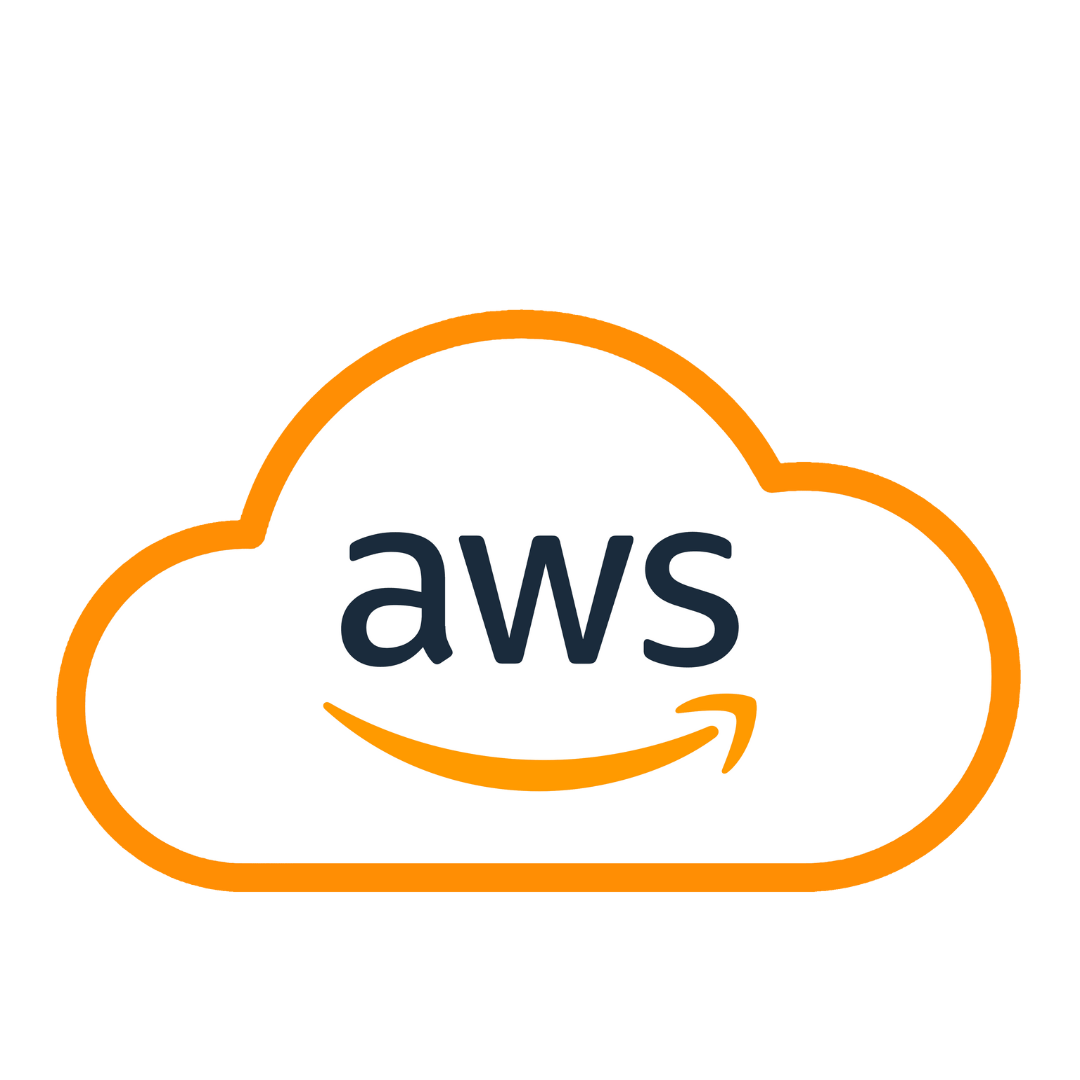
- Control and Security: By self-hosting AIOps on AWS, you maintain control over your sensitive IT data. This helps you create customized solutions depending on specific needs.
- Avoid Vendor Lock-in: With self-hosting, you're not dependent on third-party vendors. This gives you the flexibility to manage your IT operations in a way that works best for you, without restrictions.
- Powerful Infrastructure: AWS offers:
- Compute power through EC2
- Storage options with S3
- Scalability with EKS
- Seamless Integration: AWS works well with managed services like CloudWatch for effective monitoring.
- Cost-Efficiency: Using open-source frameworks reduces costs and enhances customization, making them great for developers seeking full control over their AIOps setup.
Now, let's look at the top 5 open-source AIOps frameworks you might be ignoring.
1. Apache Airflow + Metaflow: The Pipeline Orchestration Winner
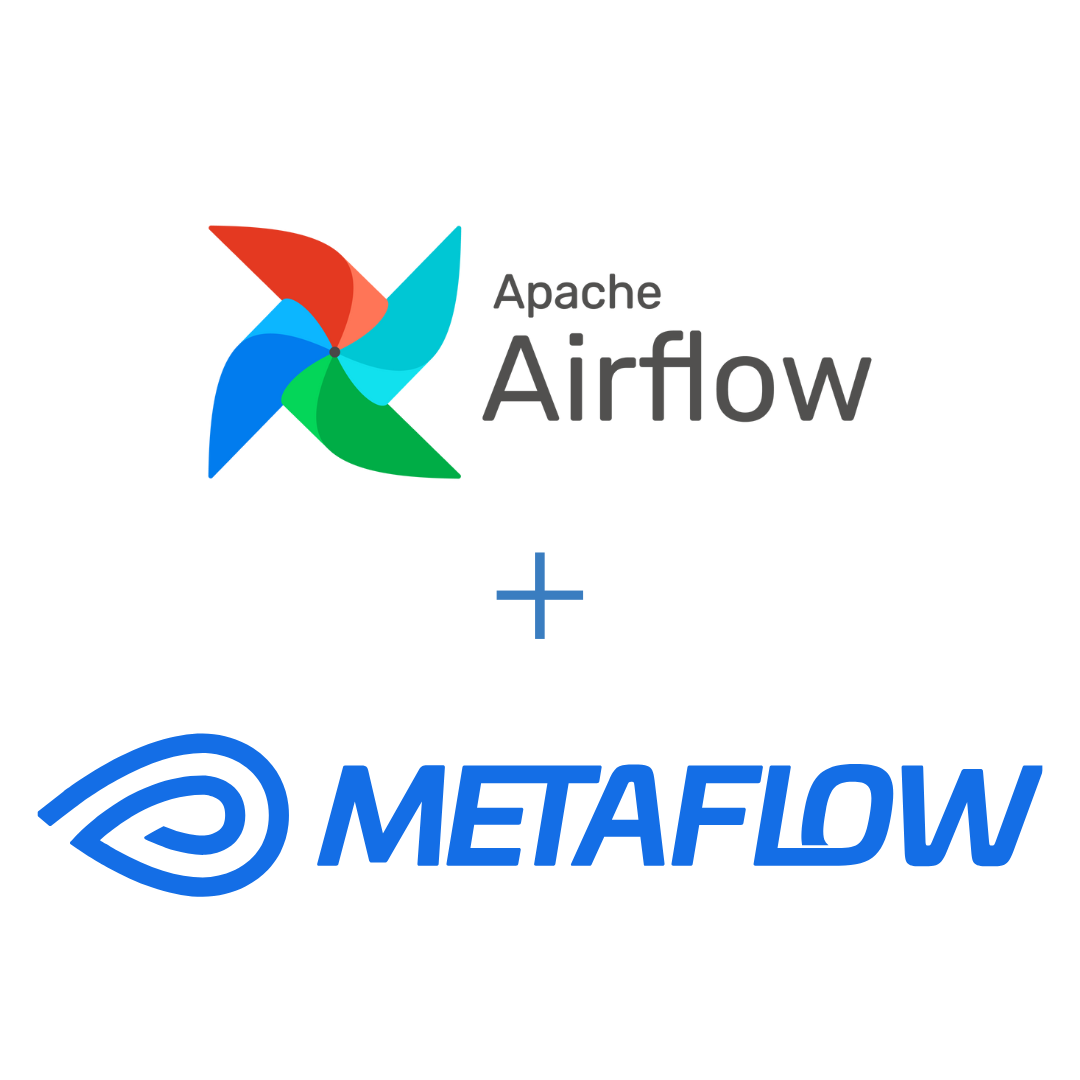
When it comes to managing AIOps workflows, be sure to consider Apache Airflow and Metaflow. Airflow is an open-source platform that makes it easier to schedule and monitor workflows. For instance, it can efficiently pull logs from AWS CloudTrail and send that data to anomaly detection models, helping you keep everything running smoothly. It achieved a 67% year-over-year increase in downloads, totaling over 165.7 million in 2023, highlighting its status as a top workflow tool.
You can run Airflow on AWS using Amazon Managed Workflows for Apache Airflow (MWAA) or set it up on an EC2 instance for a flexible, scalable solution.
On the other hand, Metaflow, developed by Netflix, simplifies machine learning workflows. Built on Python, it integrates seamlessly with AWS services like S3 and Batch. This makes it simple to manage tasks like data preprocessing and model training. This combination allows Airflow to handle scheduling while Metaflow takes care of ML tasks, such as predicting server failures using CloudWatch metrics.
Self-Hosting on AWS: Set up MWAA for Airflow or deploy both on EC2 instances with GPU support for ML tasks. Connect them with S3 for data storage and SageMaker for model tuning as needed.
2. Feast: The Key Resource for Real-Time Incident Prediction
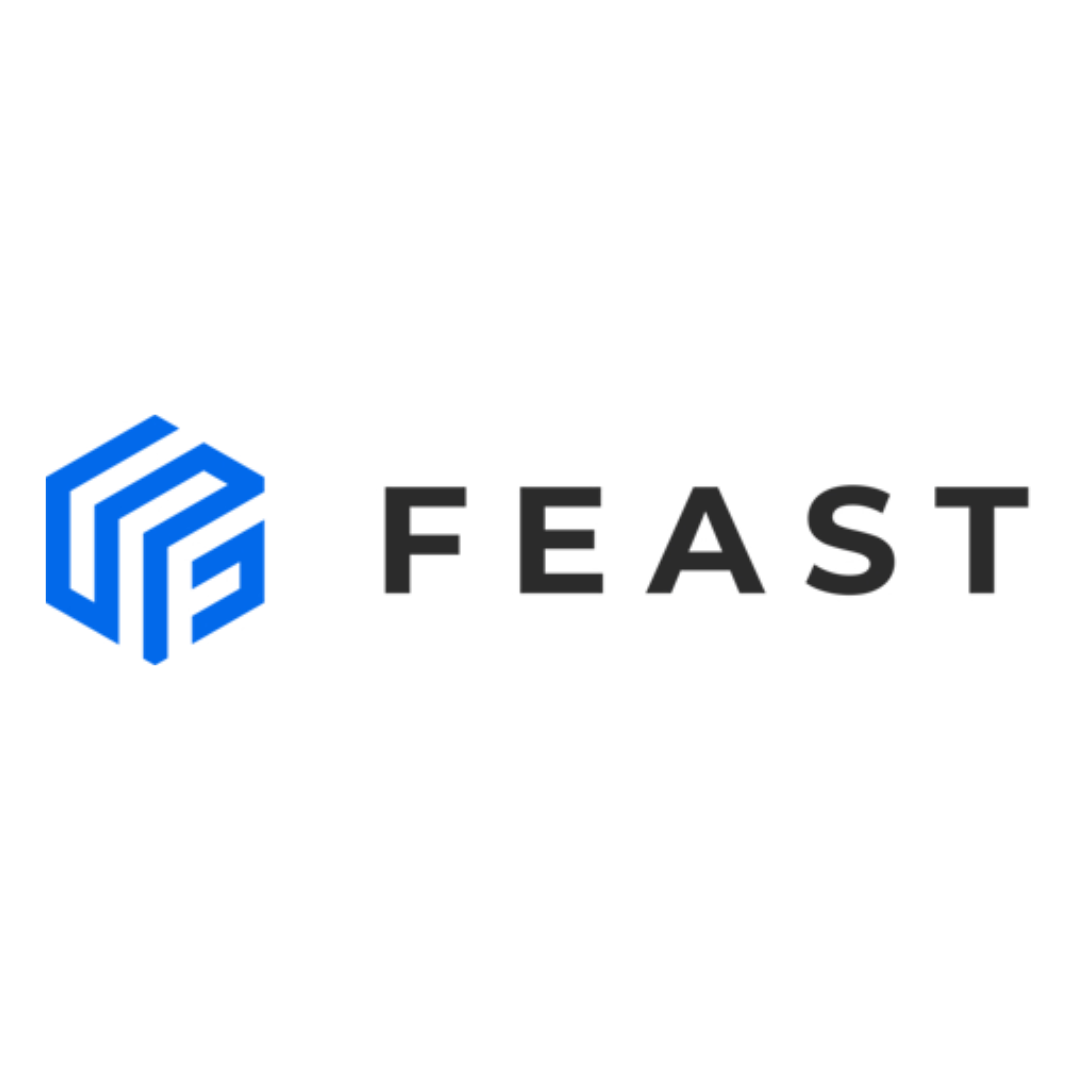
Feast might not be widely known, but it's wonderful for predicting incidents in real-time within AIOps. This open-source feature store helps manage and serve important machine-learning features for predictive models. This includes CPU usage trends or network latency stats. Imagine being able to anticipate an IT incident before it causes a problem. Feast makes that possible by storing historical and real-time features, pulling data from S3, and delivering it to models almost instantly.
You can easily deploy Feast on AWS using EC2 or Elastic Kubernetes Service (EKS), with S3 serving as your storage solution. When paired with Amazon SageMaker, you can train models using these features, creating a system that identifies anomalies—such as sudden spikes in error rates—before they become larger issues. Many developers tend to overlook Feast because they get caught up in more comprehensive machine learning platforms, missing out on its lightweight, AIOps-focused advantages. However, leading companies use Feast to stay proactive in addressing incidents, and you should definitely consider incorporating it into your toolkit as well.
Self-Hosting on AWS: Remember to use EKS for its scalability, S3 for your storage needs, and SageMaker for training your models. If you connect everything to CloudWatch, you’ll have access to real-time metrics which helps predict incidents like an expert.
3. Seldon Core: Deploying ML Models Confidently

Seldon Core is an open-source framework designed to transform machine learning models into production-ready microservices. It is ideal for tasks like detecting anomalies or conducting root cause analysis. Seldon Core integrates smoothly with popular frameworks like TensorFlow and PyTorch. But, you know what really sets it apart? Its scalability and user-friendly approach that makes it simple to deploy models with ease. You can run Seldon Core on AWS using Elastic Kubernetes Service (EKS), which allows you to deploy models that predict IT issues in real time.
For example, train a model to spot unusual traffic patterns using AWS X-Ray traces, then deploy it with Seldon Core. It takes care of scaling, monitoring, and even A/B testing—all essential for AIOps in fast-changing environments. Some developers skip Seldon Core in favor of more well-known tools like TensorFlow, but its microservice approach makes it a strong choice for those self-hosting AIOps solutions on AWS.
Self-Hosting on AWS: Launch Seldon Core on EKS with an Application Load Balancer to manage traffic. If you prefer not to use Kubernetes, you can connect it with CloudTrail for data handling and ECS for containerized workloads.
4. Prometheus + Grafana: Observability Meets AIOps
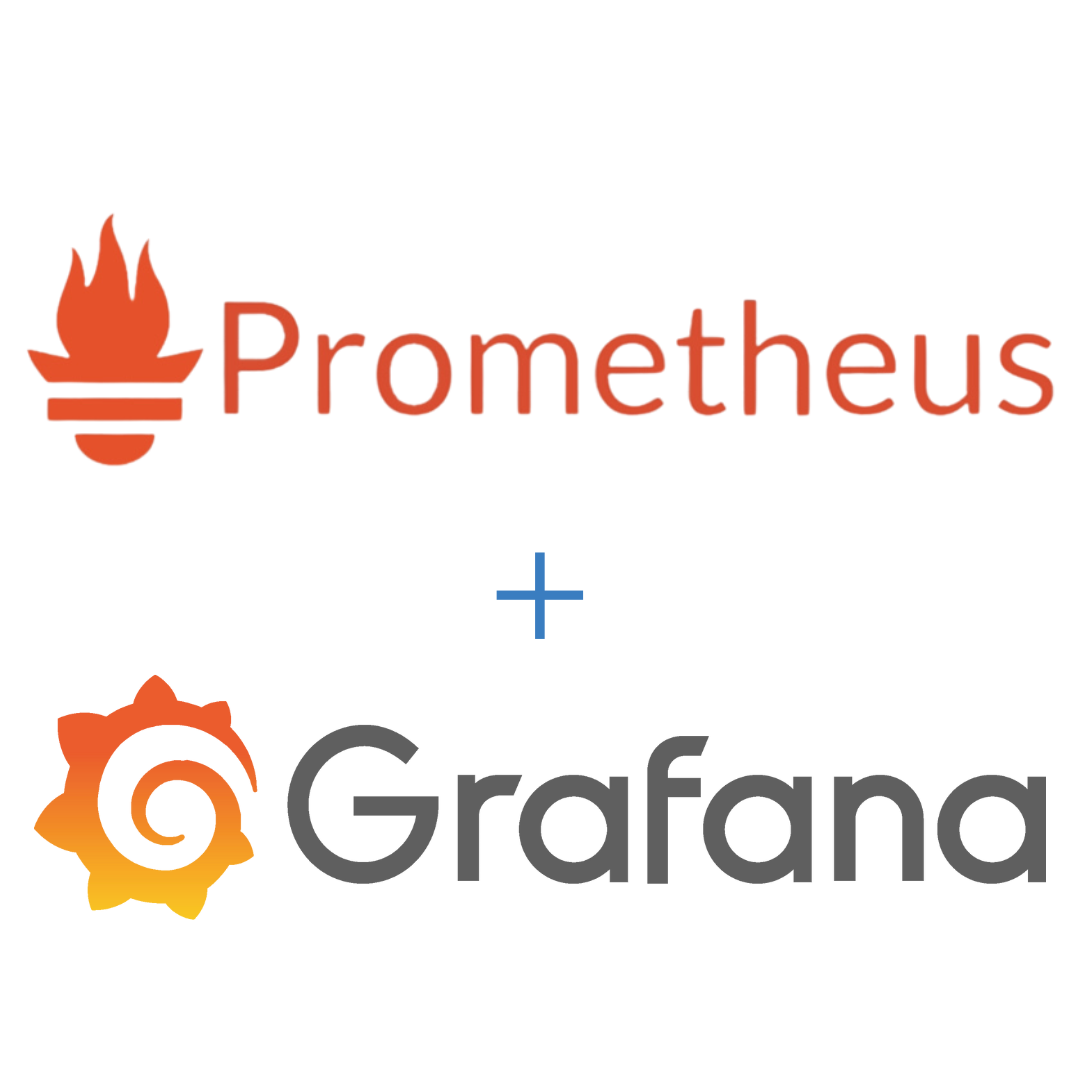
Prometheus and Grafana make a good pair in the AIOps world. Prometheus is an open-source monitoring tool that gathers key metrics like server health and application performance from AWS EC2 instances or containers. Grafana takes that data and turns it into real-time dashboards, making it easy to spot trends that could indicate potential problems.
What makes this pairing AIOps-ready? You can feed Prometheus metrics into a self-hosted machine learning model (for example, via Seldon Core) to predict failures, and then use Grafana to visualize these insights. Both can be deployed on AWS EC2, or you can opt for managed Prometheus services to simplify the setup. Many developers miss out on this combination because it's often seen as “just monitoring.” However, when integrated with AI, it becomes a proactive AIOps tool.
Self-Hosting on AWS: You have the option to run Prometheus and Grafana on EC2, or use AWS Managed Prometheus and Grafana for convenience. Stream your metrics into a custom AI model hosted on SageMaker or ECS for added predictive power.
5. AIOpsLab: The Progressive Newcomer
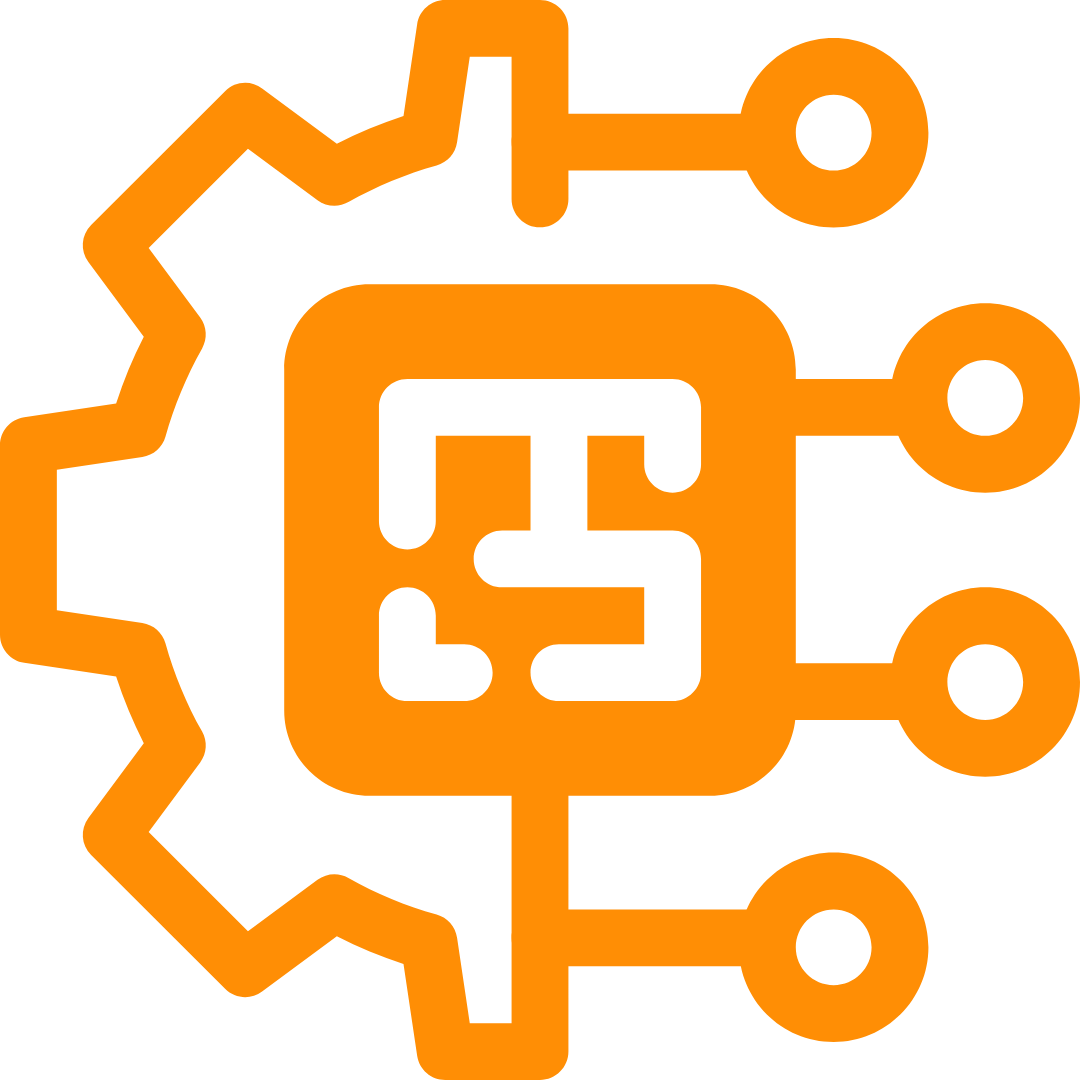
AIOpsLab, introduced by Microsoft researchers in December 2024, is an open-source framework designed for building smart AIOps agents. This innovative tool focuses on tasks like fault detection and mitigation in cloud environments like AWS. Think of it as a playground for developing custom AIOps solutions—like an agent that automatically resolves server overloads based on CloudWatch alerts.
You can deploy AIOpsLab on AWS using Docker containers on EC2 or ECS, pulling data from your IT stack. Its modular design lets you tailor it to your specific needs, making it ideal for developers who want complete control over their AIOps environment. Although it’s still relatively new and not yet widely adopted, early users are already exploring exciting possibilities for what AIOps can achieve.
Self-Hosting on AWS: You can deploy it using Docker on EC2 or ECS, store your data in S3, and pull in information from CloudWatch. Plus, you can easily scale it with auto-scaling groups to handle larger IT environments.
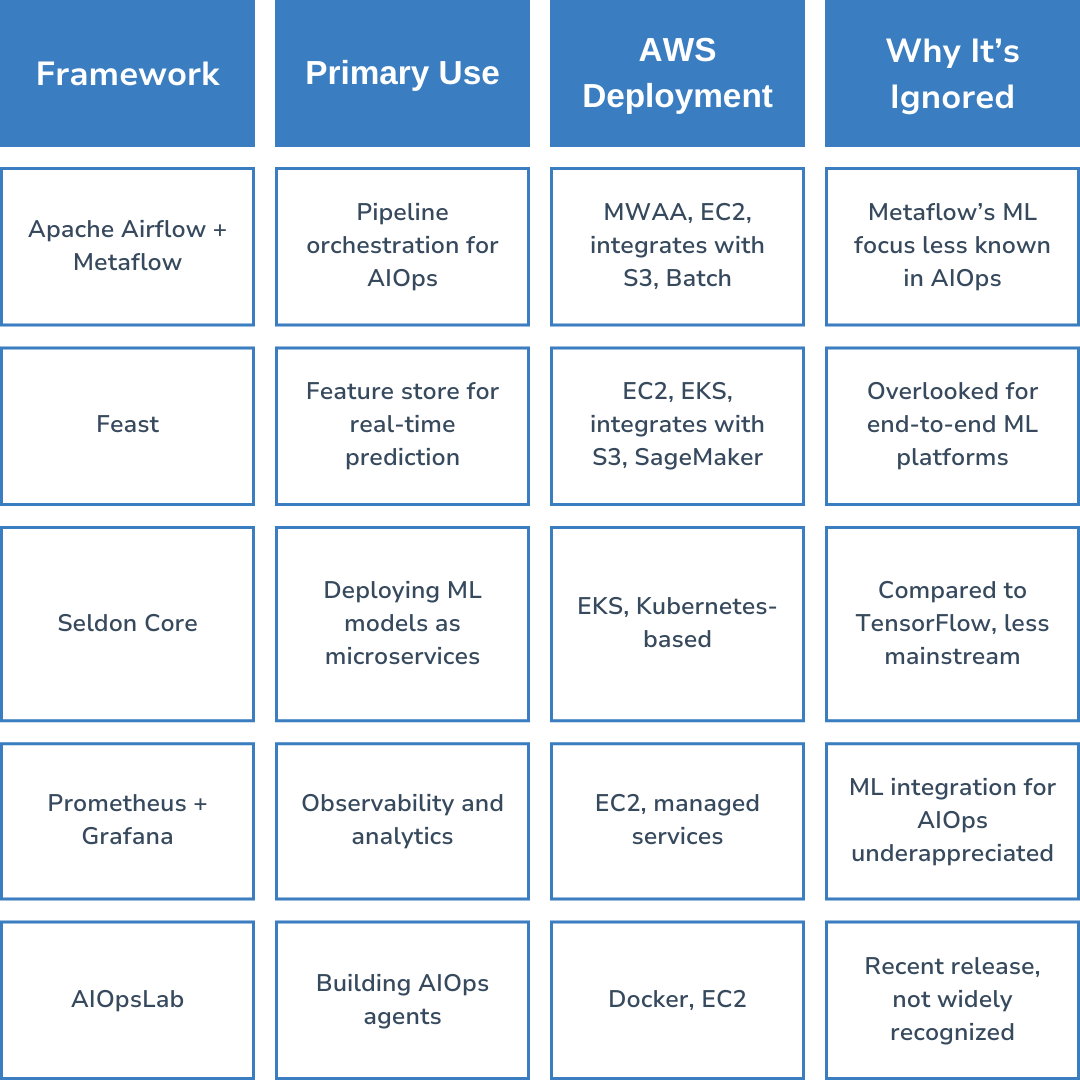
(Table: Summary of Top 5 Open-Source AIOps Frameworks on AWS)
How to Self-Host AI on AWS for AIOps
Setting up these frameworks on AWS is pretty straightforward with the right approach. Start with EC2 instances (make sure they’re GPU-enabled for machine learning tasks) or use EKS for Kubernetes tools like Seldon Core and Feast. To streamline your infrastructure, use Terraform to create a Virtual Private Cloud (VPC), subnets, and security groups for added security.
Store your data in S3, process it using AWS Batch or ECS, and connect with CloudWatch for real-time metrics. For machine learning models, you can train and fine-tune them with SageMaker while serving them through ECS or EKS. Don't forget to secure everything with IAM roles and encryption. This setup enables you to run Airflow, Feast, and other tools customized to meet your AIOps needs.
Why AIOps Frameworks Matter?
The five frameworks—Apache Airflow + Metaflow, Feast, Seldon Core, Prometheus + Grafana, and AIOpsLab—provide a powerful mix of orchestration, prediction, deployment, observability, and innovation. They may not have the same hype as TensorFlow, but they are specifically tailored to tackle AIOps challenges. Self-hosting them on AWS gives you the ability to automate IT operations, foresee incidents, and manage costs while keeping everything open-source.
Get Started Today
Ready to step out of the TensorFlow bubble and self-host AIOps like the pros? Choose one of these frameworks, launch an AWS instance, and start experimenting. Whether it’s Airflow managing your workflows or Feast forecasting your next outage, these tools can transform your IT operations.
If you have questions or need assistance getting started, don’t hesitate to reach out! Contact our AWS experts for more information about our services, and let our team help you implement AIOps for your organization. Let’s kick off the AIOps conversation!
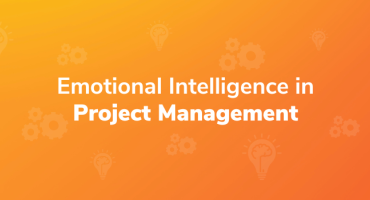
Emotional Intelligence in Project Management
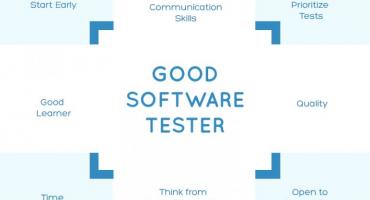
Qualities to Become a Good Software Tester


